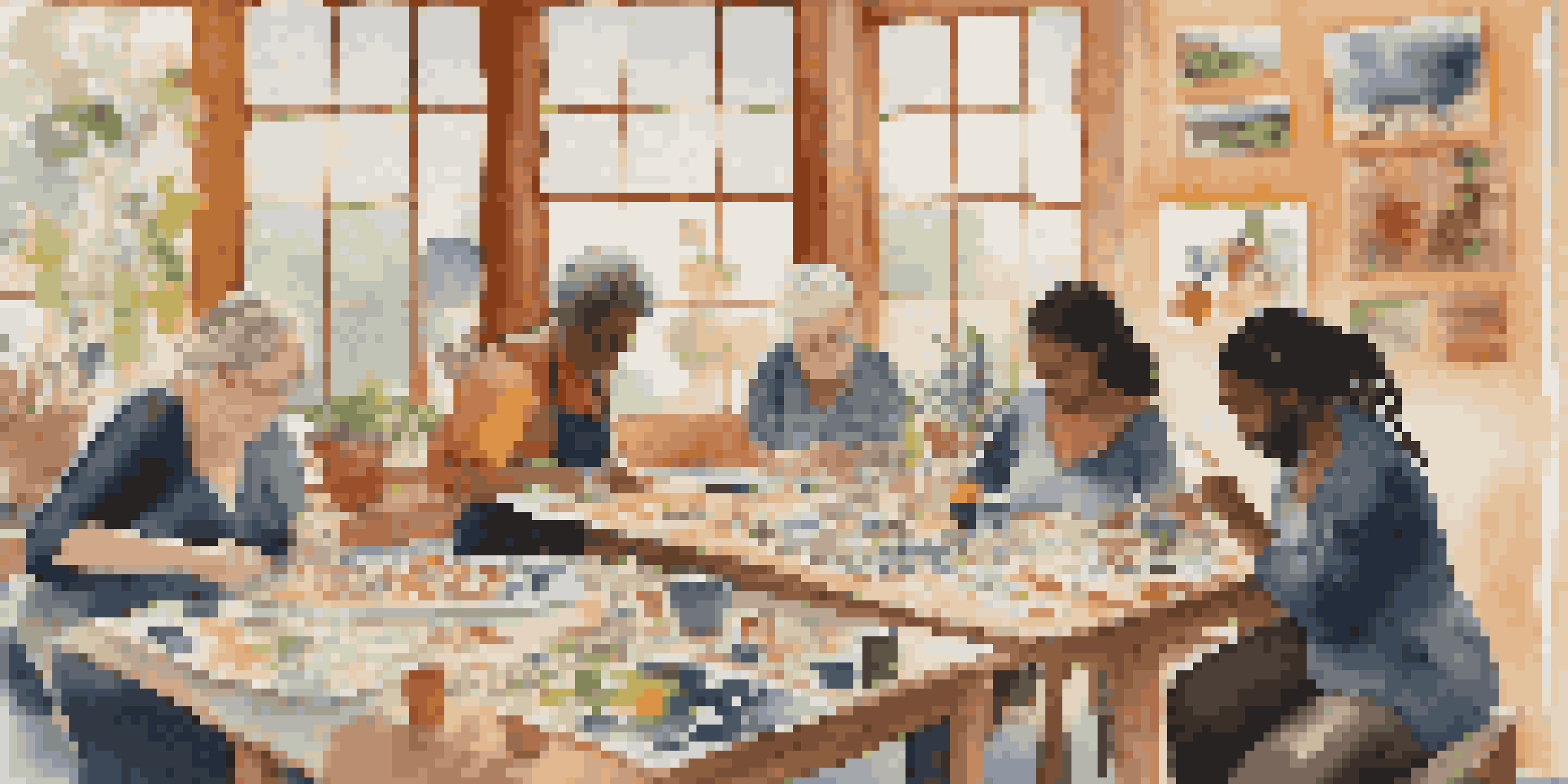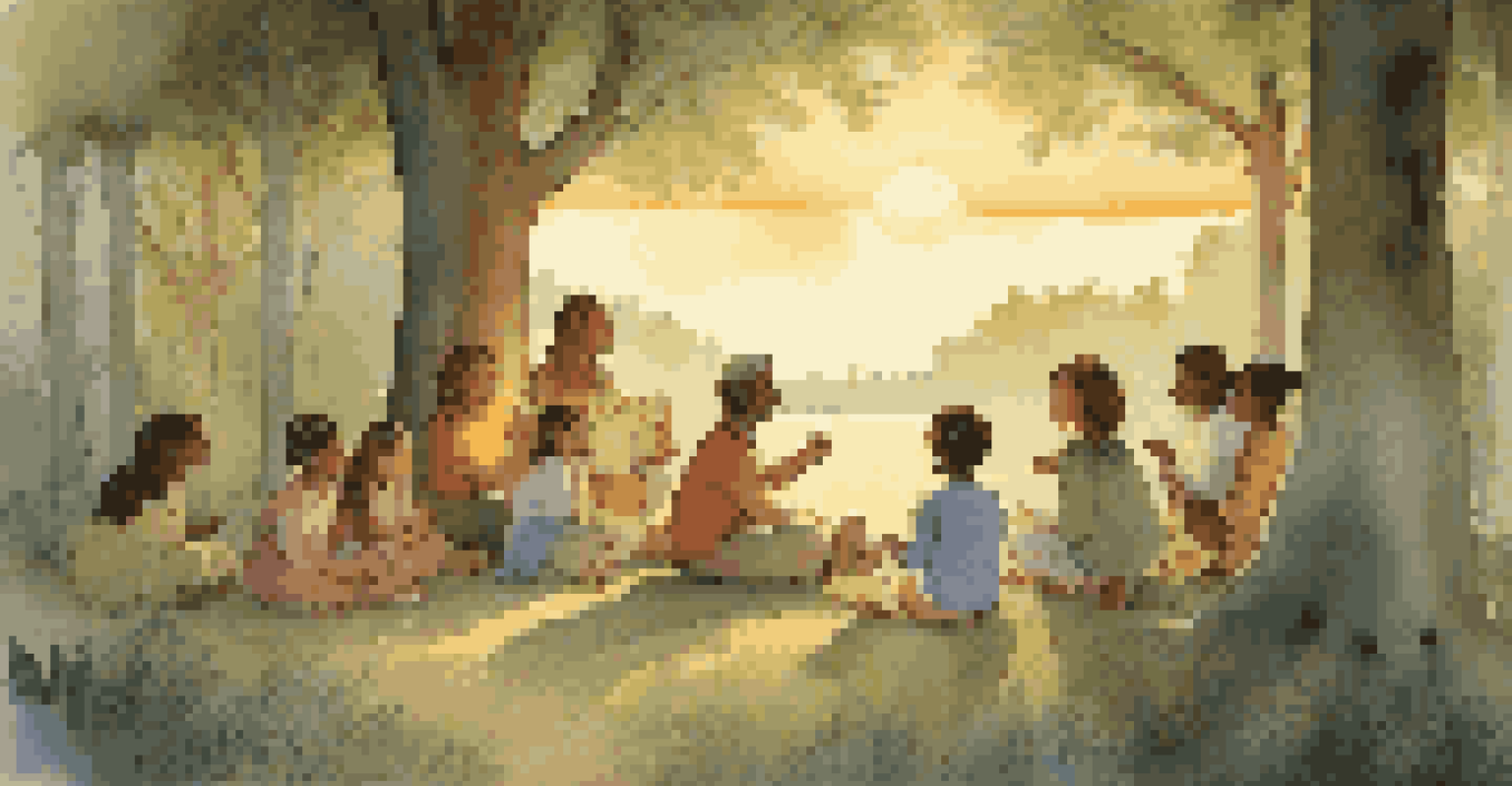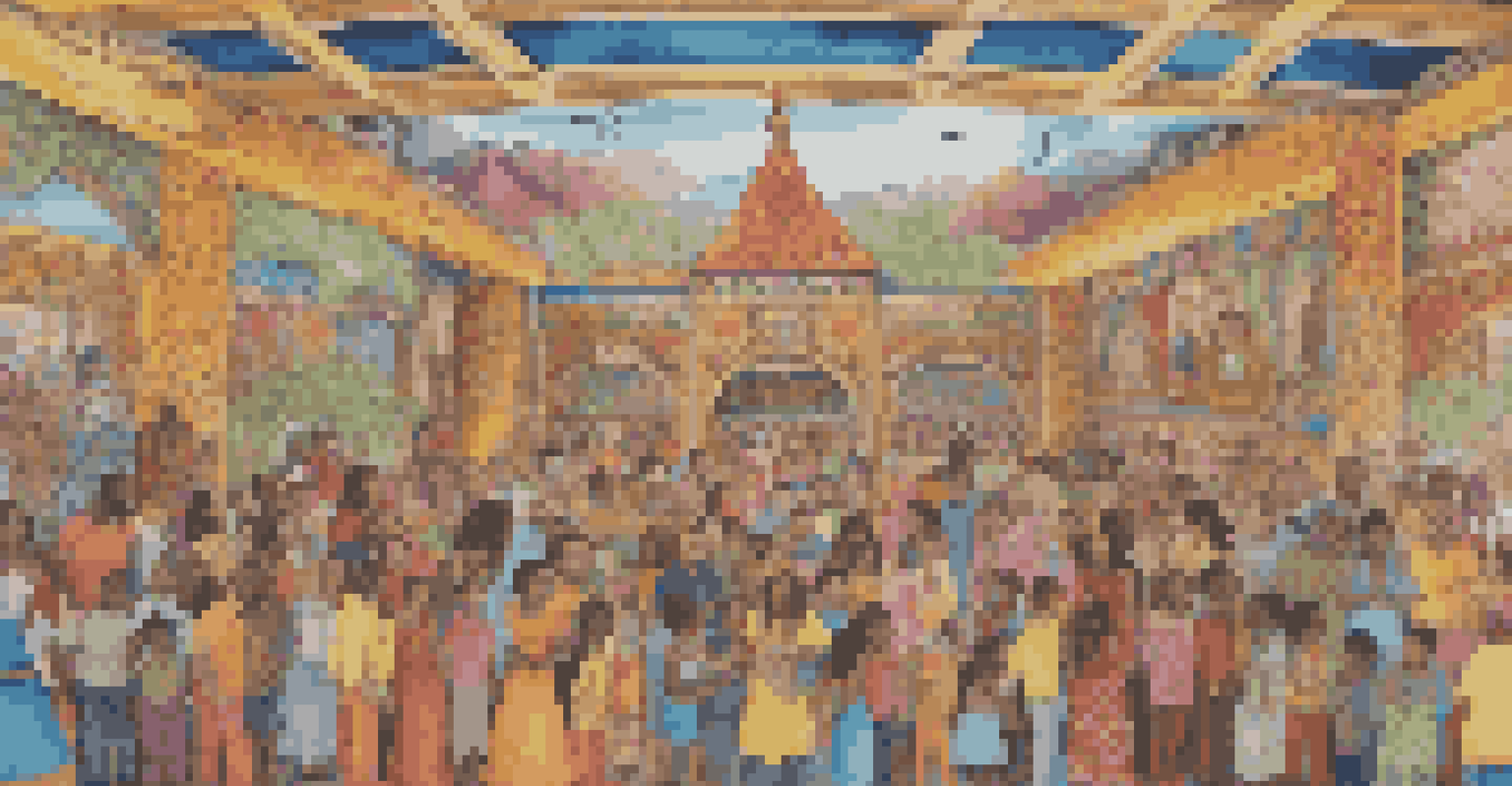Folklore and Art Therapy: Healing Through Cultural Narratives

Understanding Folklore: The Heart of Cultural Narratives
Folklore encompasses the traditional beliefs, customs, and stories of a culture. These narratives often include myths, legends, and fables that have been passed down through generations. They serve as a mirror reflecting the values and struggles of a community, giving insight into collective experiences.
Folklore is the memory of a people, the record of their experiences, and the embodiment of their values.
By tapping into folklore, individuals can connect with their roots and the shared history of their culture. This connection can be particularly healing as it fosters a sense of belonging and identity. For instance, a person might find solace in a story that mirrors their own life challenges, creating a bridge between personal experience and cultural wisdom.
Moreover, these stories often contain moral lessons and coping strategies that have stood the test of time. Engaging with folklore can provide individuals with tools to navigate their emotional landscapes, making it a powerful ally in the journey of self-discovery and healing.
Art Therapy: A Creative Path to Emotional Well-being
Art therapy is a therapeutic practice that utilizes creative expression to help individuals explore their feelings and thoughts. Through various forms of art—be it painting, drawing, or sculpting—participants can communicate what they might struggle to express with words. This form of therapy can be especially beneficial for those who find traditional talk therapy challenging.

The process of creating art allows for self-exploration and emotional release, often leading to insights about one’s inner world. For example, someone grappling with anxiety might channel their feelings into a chaotic painting, visually representing their turmoil and, in turn, finding a sense of relief. This tangible representation of emotions can be both cathartic and enlightening.
Folklore Connects Us to Our Roots
Engaging with folklore allows individuals to explore their cultural heritage, fostering a sense of belonging and identity.
Additionally, art therapy provides a safe space for individuals to experiment and take risks without fear of judgment. The focus shifts from the final product to the process of creation itself, fostering a sense of freedom that can be liberating and healing.
The Intersection of Folklore and Art Therapy
When folklore and art therapy intertwine, they create a unique healing experience that resonates deeply with individuals. By using cultural narratives as a source of inspiration, clients can engage with their heritage while expressing their emotions through art. This combination can evoke a powerful sense of connection to both self and community.
Art is a way of recognizing oneself in the universe, and it can be a powerful tool for healing.
For instance, a participant might choose to illustrate a folktale that resonates with their personal journey. This act not only brings the story to life but also allows them to process their emotions surrounding the themes of the tale. Engaging with these narratives can aid in understanding personal struggles and fostering resilience.
Moreover, this intersection encourages individuals to explore their identity in a creative context. By reinterpreting folklore through their artistic lens, they can reclaim narratives and reshape their stories, which is a vital part of the healing process.
Cultural Narratives as Tools for Healing
Cultural narratives serve as powerful tools for healing because they embody shared wisdom and experiences. Engaging with these stories can help individuals reframe their personal struggles in a broader context, allowing for a sense of perspective and understanding. This can be especially comforting in times of crisis or emotional turmoil.
For example, a narrative about a hero overcoming adversity can inspire someone facing their own challenges. By identifying with the hero’s journey, individuals can find motivation and hope. The act of reimagining their struggles through the lens of a cultural story can provide a new narrative that fosters healing.
Art Therapy Unlocks Emotional Healing
Art therapy provides a creative outlet for self-expression, enabling individuals to process their emotions in a safe and supportive environment.
Moreover, these narratives often promote values such as community support and resilience, which can inspire individuals to seek connection with others. In this way, folklore not only aids in personal healing but also fosters a sense of community and shared purpose.
The Role of Community in Folklore and Art Therapy
Community plays a vital role in both folklore and art therapy, as healing often occurs in a relational context. Sharing stories within a group can foster connection and empathy, allowing individuals to feel seen and heard. This sense of belonging can be incredibly validating and supportive during the healing process.
In art therapy settings, group activities that focus on cultural narratives can encourage collaboration and shared expression. Participants might create a mural inspired by local folklore, symbolizing their collective experiences and history. Such projects can enhance feelings of unity and strengthen community bonds.
Furthermore, these communal experiences can help individuals realize that they are not alone in their struggles. The act of sharing and creating together can be a powerful reminder of the strength found in community support, which is essential for emotional healing.
Practical Applications of Folklore in Art Therapy
Incorporating folklore into art therapy can take many forms, making it a versatile approach for practitioners. Therapists might encourage clients to select a folktale that resonates with them and express its themes through various art forms. This could be a drawing, a collage, or even a performance piece, allowing for diverse expressions of creativity.
Another practical application could involve storytelling sessions where clients share personal narratives alongside traditional tales. This practice not only validates individual experiences but also helps to weave personal stories into the fabric of cultural narratives, creating a rich tapestry of shared understanding.
Community Enhances Healing Experiences
Sharing stories and creating art within a community strengthens bonds and offers essential support during the healing journey.
Additionally, therapists can create workshops that focus on specific cultural themes, encouraging participants to explore and express these narratives through group art projects. This collective approach can deepen the healing experience, as individuals reflect on their cultural heritage while connecting with others.
The Future of Folklore and Art Therapy
As the fields of folklore and art therapy continue to evolve, their intersection offers exciting opportunities for exploration and healing. Increasingly, therapists are recognizing the value of cultural narratives in therapeutic settings, leading to innovative practices that honor individuality while celebrating heritage. This trend opens doors to more inclusive therapeutic approaches.
Moreover, as global awareness of mental health increases, there is a growing interest in culturally sensitive therapy. By integrating folklore into art therapy, practitioners can create more tailored experiences that resonate with clients' backgrounds and experiences. This not only enhances the therapeutic process but also empowers individuals to reclaim their narratives.

Ultimately, the combination of folklore and art therapy holds the potential to enrich the healing landscape, offering individuals a path to emotional well-being that honors their cultural identities. As we move forward, the stories we tell and the art we create will continue to play a vital role in our collective healing journey.